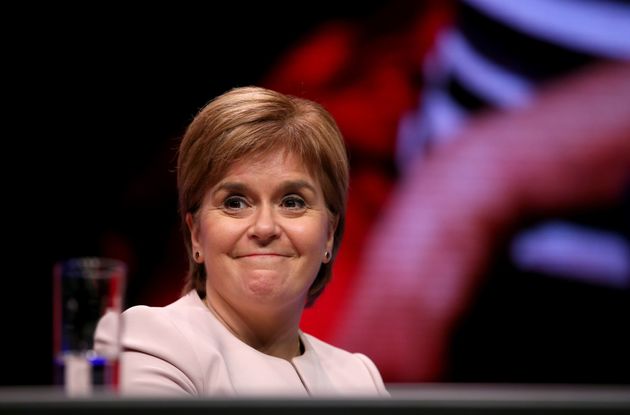
Over the weekend, Edinburgh played host to a rather impressive example of political organisation. The Royal Mile (the one Scots mile of streets connecting Edinburgh Castle with the Palace of Holyrood House – aren’t we Scots a wonderfully literal bunch?) became impassable as a large pro-independence procession made its way along the ancient cobbled streets and culminated in a rally in front of the Scottish Parliament.
As is usual with such affairs, estimates on how many attended the event vary wildly, depending on who you ask, with City of Edinburgh Council estimating that 20,000 attended while pro-Independence newspaper The National reported an attendance of between 75,000 and 100,000 – the correct answer is probably somewhere in them middle.
Regardless of your opinion on the constitution, it is hard to deny that the sight of so many nationalists, flags and stickers in hand, was, aside from being politically problematic, visual striking and will no doubt be considered to have been a success by everyone under the All Under One Banner….er…. banner.
Furthermore, if it were possible for the appetite for nationalism to subside, there is plenty currently on display as, at time of writing, the Scottish National Party (SNP) conference is fully under way with all eyes looking forward to when First Minister, Nicola Sturgeon, takes to the stage for her speech. The FM has already dominated the headlines, as is her seemingly never-ending ability, by announcing that her party’s MPs would support a vote on the final Brexit deal – shocking some perhaps less attentive observers, unaware of Ms Sturgeon’s stance on both Brexit and referendums more generally.
While the big take-away message form SNP conference is yet to emerge, it’s clear that, as is the case with most party conferences, the prerequisite ‘playing to the home team’ rally aspect will have been designed to get Team Nicola raring to go in whatever direction she asks of them – there’s not a party in the UK, or the rest of the West, that wouldn’t guard jealously the kind of enthusiasm that Ms Sturgeon has from those who currently support her her, if they’re honest.
So, with one big rally on the streets of Edinburgh and another one, albeit more sanitised and corporate in nature, under way in Glasgow, one might expect the independence cause, and the SNP, to be roaring with confidence right now and that is the image being shown to pretty much any television camera and spouted into any radio microphone that becomes available. The line is that independence, as the FM herself said recently, is “inevitable.”
But is it? According to What Scotland Thinks, support for independence has largely remained unchanged (currently sitting at around 41%) and other sources suggest this is accurate. Meanwhile, the SNP has lost its majority in Holyrood and, while still being Scotland’s single biggest political force, has had its number of MPs at Westminster slashed. While there’s still a fair bit of tarmac visible, it is Ruth Davidson’s renewed and revitalised Scottish Conservative and Unionist Party that is faintly visible in the First Minister’s rear-view mirror and that cannot make her particularly happy.
This is the position that the First Minister, and her party, finds herself in at present. The SNP is under attack on its record on education and health (the two big issues in Scotland’s devolution settlement) while also being accused by those who are ostensibly on its side of holding up the march towards independence. This is not to say that Ms Sturgeon is not being canny for avoiding calling for a second Independence vote right now – all the indicators suggest she would lose it, which would have an apocalyptic impact on her and her party’s aims as well the legitimacy of both. However, it’s important to remember that many of the massive influx of new members that the SNP has seen of late are not there for SNP policy per se – they are there because they see Nicola Sturgeon’s party as the most effective mechanism to achieve a second independence referendum and, by extension, independence itself. The longer that Nicola Sturgeon attempts to placate these folks, who now constitute her base, the less patience they will have with her and her party.
The First Minister is the leader of a shrewd and savvy political party, and possesses both qualities in abundance herself, and will no doubt, in an encrypted file somewhere, have her plan for independence and the means to achieve it ready for launch at the some opportune moment (initial attempts not withstanding). However, as she sits down at her desk to open it she will presumably hear a ticking clock reminding her that those within, and without, may well be running out of patience. Time, it seems, may be no longer on her side.